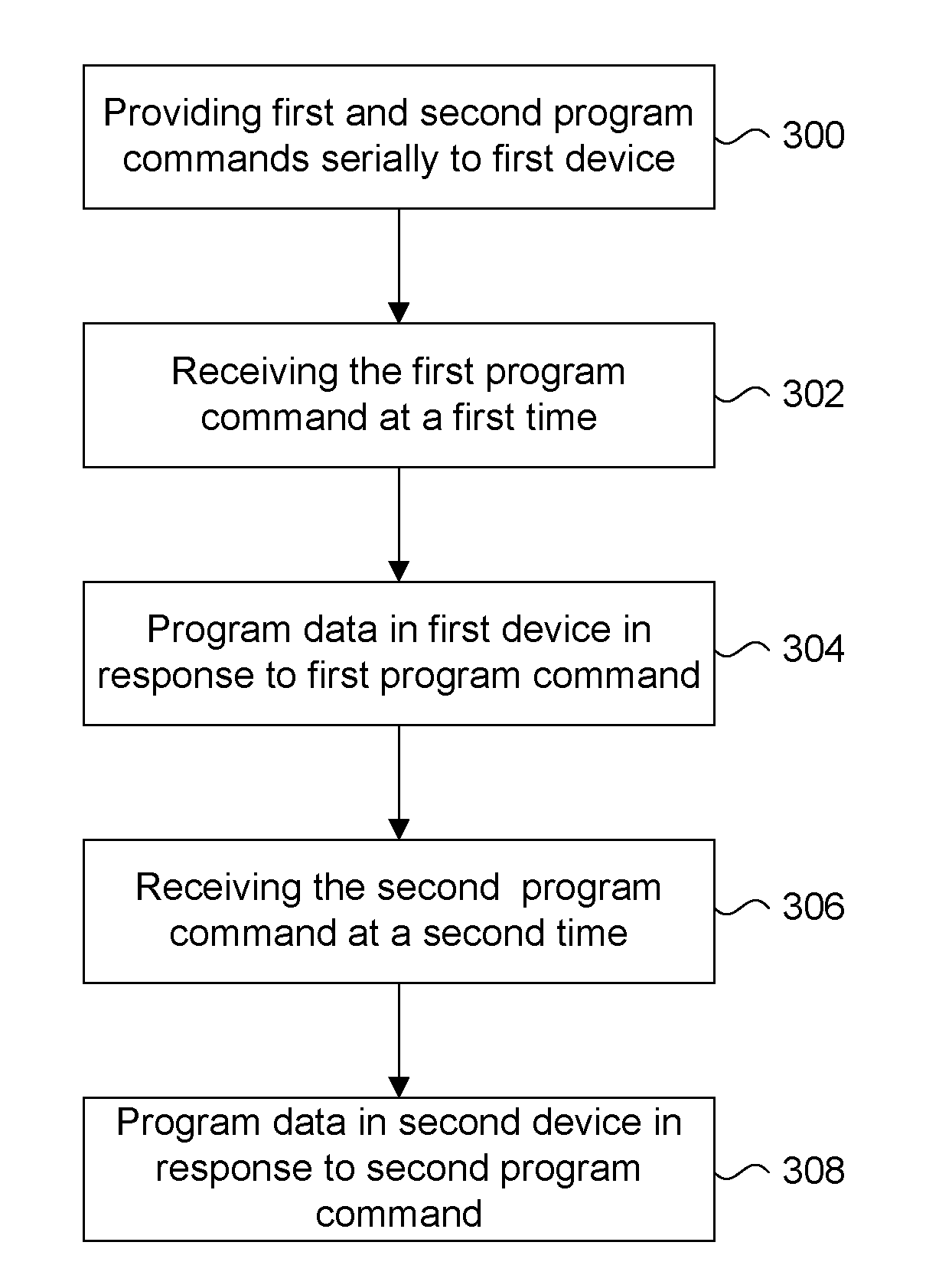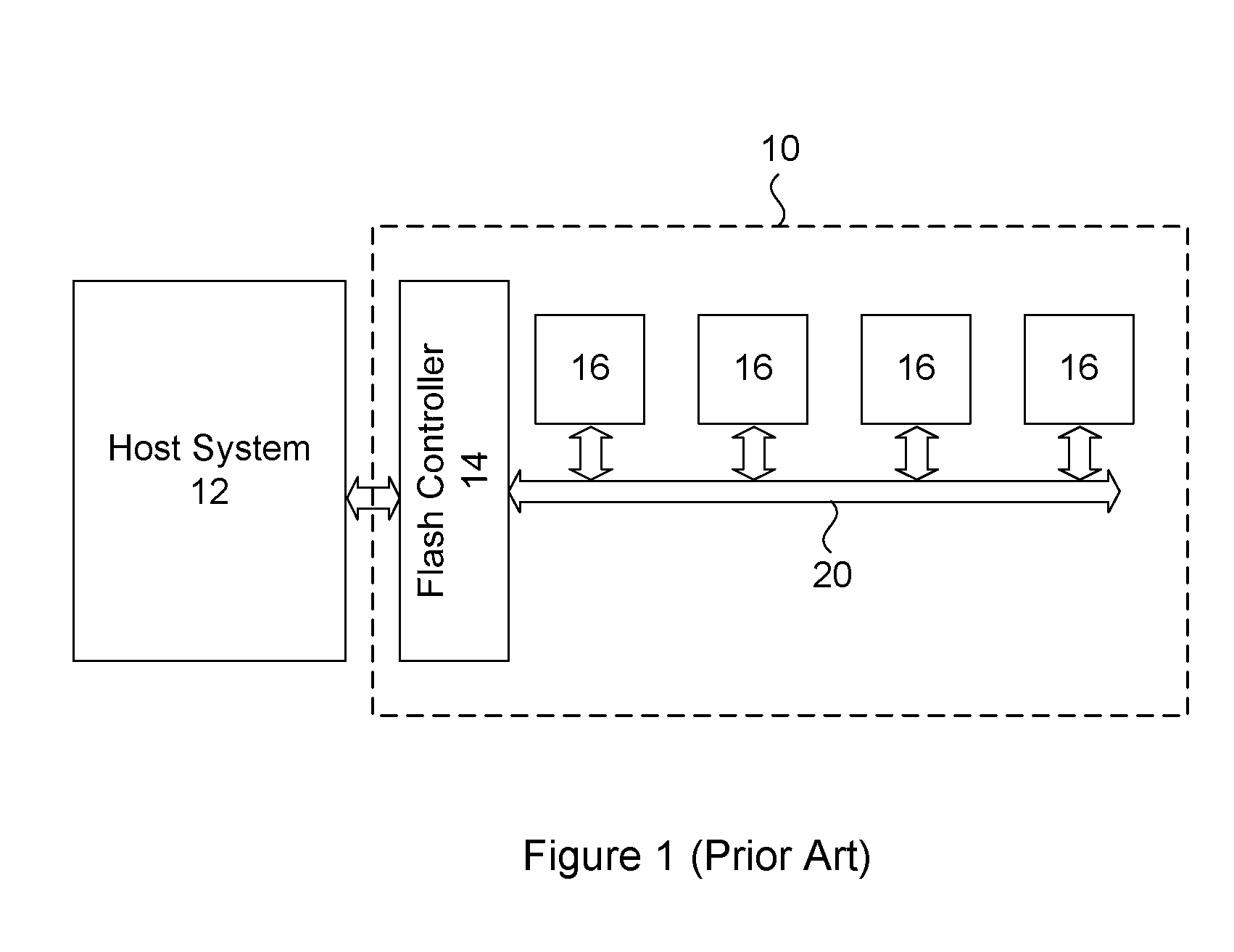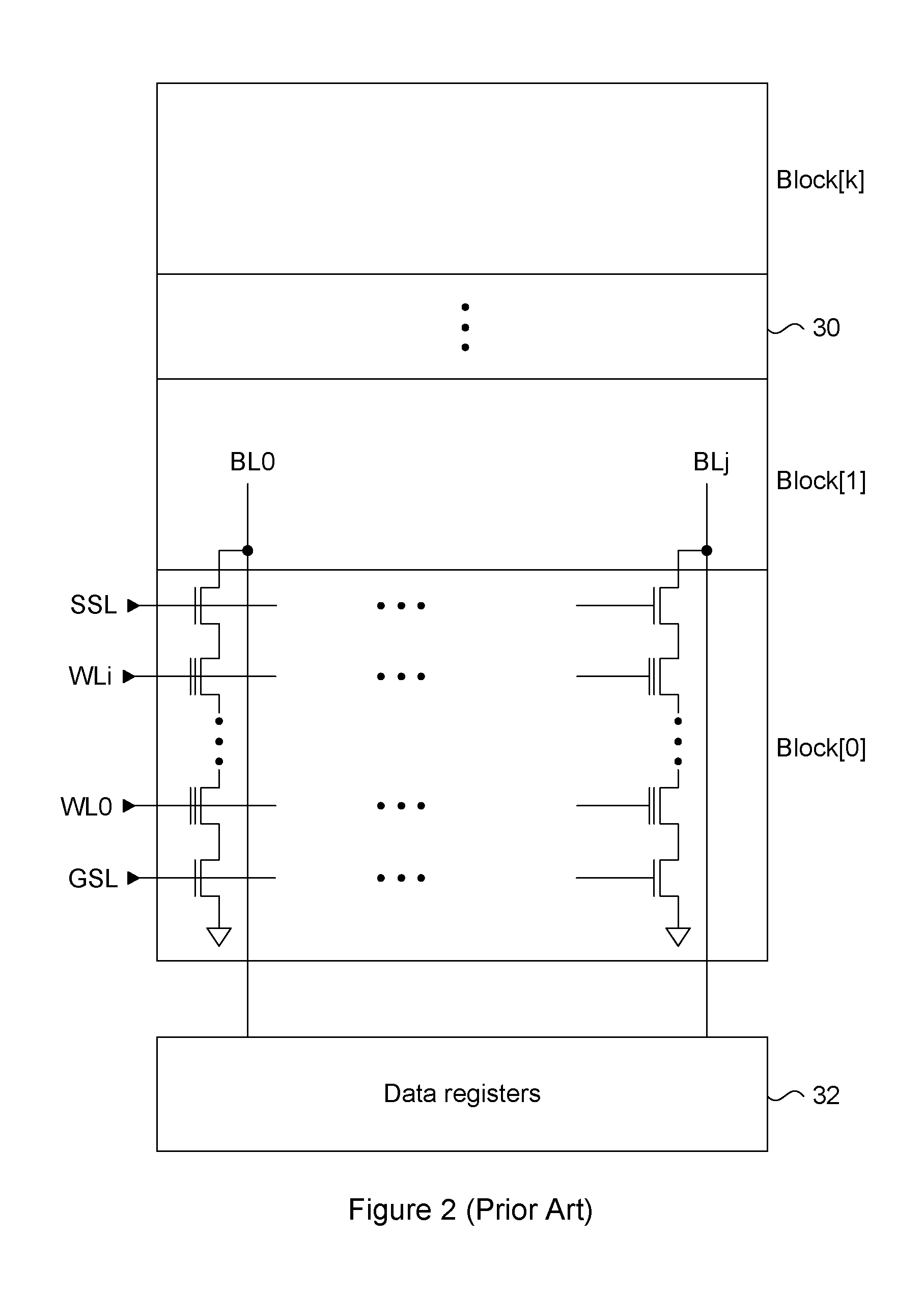Flash memory system control scheme
a flash memory and control scheme technology, applied in the field of flash memory, can solve the problems of affecting the performance of the system, affecting and imposing physical performance limitations on the flash memory system b>10/b>, so as to improve the programming throughput of the flash memory system
- Summary
- Abstract
- Description
- Claims
- Application Information
AI Technical Summary
Benefits of technology
Problems solved by technology
Method used
Image
Examples
Embodiment Construction
[0041]A Flash memory system architecture having serially connected Flash memory devices to achieve high speed programming of data. High speed programming of data is achieved by interleaving pages of the data amongst the memory devices in the system, such that different pages of data are stored in different memory devices. A memory controller issues program commands for each memory device in a bitstream having one or more signal lines. As each memory device receives a program command, it either begins a programming operation or passes the command to the next memory device. Therefore, the memory devices in the Flash system sequentially program pages of data one after the other, thereby minimizing delay in programming each page of data into the Flash memory system. The memory controller executes a wear level control algorithm to optimize programming performance and endurance for data of any size.
[0042]FIG. 4 is a block diagram of a Flash memory system having serially connected memory d...
PUM
 Login to View More
Login to View More Abstract
Description
Claims
Application Information
 Login to View More
Login to View More - R&D
- Intellectual Property
- Life Sciences
- Materials
- Tech Scout
- Unparalleled Data Quality
- Higher Quality Content
- 60% Fewer Hallucinations
Browse by: Latest US Patents, China's latest patents, Technical Efficacy Thesaurus, Application Domain, Technology Topic, Popular Technical Reports.
© 2025 PatSnap. All rights reserved.Legal|Privacy policy|Modern Slavery Act Transparency Statement|Sitemap|About US| Contact US: help@patsnap.com



